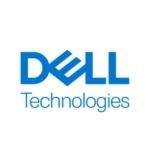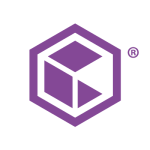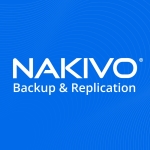What is our primary use case?
We use Nasuni to provide storage at various locations. It is for office-type files that they would use for day-to-day office work, such as spreadsheets. None of it is critical data.
Each group at each site has its own data store. For example, HR has its own, and finance has its own. All of these different groups at different locations use this data, and they use these filers to store it.
The Nasuni filers are on-site, and we have virtual edge appliances on ESX servers at about 35 sites globally. The data stored at these sites is then fed up into Azure and we have all of our data stored there.
How has it helped my organization?
The OR and DR capabilities have been a very big help for us. Previously, with the solutions we had, it would have taken weeks sometimes to get things fixed and back up and running for people. Now, it only takes a matter of minutes.
It used to be a lot of trouble to bring data back up and a lot of the time, it was read-only, so the people couldn't use it very well. Now, with Nasuni, we're able to pretty much keep their experience seamless, no matter how much trouble the hardware is in at the site.
The Nasuni filers are easy to manage, although the process is similar to what we had before. We have a report that comes out three times a day that gives us the amount of data that's in the queue to be uploaded to Azure on each individual filer. We keep track of that to make sure nothing is getting out of hand. It also tells us if the filer has been restarted and how long ago that happened. It gives us a quick view of everything and how much total we're using within Nasuni. This report is something we created on our own to keep track of things.
If a user deletes a file or a file becomes corrupted, it's easy for them to get it restored. There is very little chance that the data is going to be done. We've had a few people delete things, or they have become corrupted, and we were able to get that file back to them in the states that it was in about five minutes before they had a problem. We were able to do this without any issues. Overall, the continuous file versioning is really helpful.
What is most valuable?
The biggest and most impressive thing for us is the operational recovery (OR) and disaster recovery (DR) capabilities that Nasuni has. If a filer goes down, or an ESX server goes down, then we can quickly recover. For example, we lost a controller the other day and all of the drives were corrupted. We were able to quickly repoint all of the users to a backup filer that we have at our data center, they were back up and running within minutes, and they still have read-write capabilities. Once that ESX server was fixed, we were able to repoint everything back to it in a matter of minutes. People were then again using their local filer to connect.
Nasuni provides continuous file versioning and we take snapshots on a regular basis. Right now, we have them stored forever, but we're trying to reign that in a little bit and keep them only for a period of time. Certainly, at this point, we have a lot of file versions.
We have not had a problem with ransomware but if we did, we would be able to restore the data pretty quickly by going back to an older version of the file before the ransomware took over. It is a similar process to the DR, although a little bit different. For us, OR and DR are pretty much the same thing. We haven't had any disasters that we've had to recover from but we've had three or four hardware failures a year that we've had to deal with. The continuous file versioning has helped to fix these problems pretty quickly.
Continuous file versioning also makes it easier for our operations group. The support team is able to restore files quickly, 24/7, and it is less work for them. They have more time to focus on other problems. The end-user also has access to shadow copies through Windows, and they've used that extensively at the sites.
Nasuni has helped to eliminate our on-premises infrastructure. When we moved to Nasuni, we moved to Azure. Before that, we had a large SAN storage that we were using, and we were able to get rid of it. That was a big difference for us.
We were definitely able to save some money because we've eliminated those expensive SAN disks completely. There were some servers at our old data center that we were able to get rid of, as well. There are some new expenses with Azure because we have to pay for the space taken by the snapshots, which is why we're going to put a retention limit in place. Overall, I don't have an exact number but we were able to save money.
Nasuni is transparent to our end-users. We have it all set up as a file server through Microsoft DFS. If you were to ask one of our end-users how they like Nasuni, they would have no idea what you're talking about.
What needs improvement?
One issue that we have is related to copying data out of Nasuni. We just sold a site and it was split into two pieces. One part of it was sold to another company and we kept the other part. At the site, they have a Nasuni filer with about eight terabytes of data. Now, we have to split that data and the problem stems from the fact that the other company doesn't have Nasuni.
This means that we have to copy all of that data back to the site and into a format that they can use, which is probably just a Windows file server, and then we have to split it somehow. I'm not really sure that there's an easy way to do that. It's going to take us a little bit longer to separate this other location, and we're having to invent things as we go along.
In these areas, it's not as simple as it could be, but it doesn't happen very often. As such, we haven't had to worry about it too often. Although it's not affecting us too much at this point, if there's a problem such that we have trouble getting data out of Nasuni, then that could be an issue. However, for the time being, it seems fine.
When we have to rebuild a filer or put a new one at a site, one of the things that I would like to be able to do is just repoint the data from Azure to it. As it is now, you need to copy it using a method like Robocopy. To me, this seems counterintuitive or like we're going backward a little bit. I would like to see a way to be able to switch them around without any problem. That said, I'm not sure if it would then cause other issues because of how Nasuni works, so it may not be possible.
For how long have I used the solution?
We started using Nasuni in 2018 and it's been running ever since.
What do I think about the stability of the solution?
Up until about a week ago, the stability has been rock solid. We've actually had a few issues after upgrading to version 9.3 that we're trying to deal with. We have a couple of sites that we're still not sure if Nasuni is the problem, or if it's VMware ESX, and we're working on that. At this point, we're not thinking about rolling back because of all of our sites, only two of them have problems. As such, we think that something else may be going on.
For the most part, it's been extremely stable, with no issues whatsoever. With Nasuni, there has been very little downtime, if any. Most of the sites have never gone down and with the sites that have, there's usually some other external problem.
Overall, it's been very stable for us.
What do I think about the scalability of the solution?
We are limited to the amount of space that we have purchased from Nasuni. If we get close to running out then we just buy more. We still have to pay for the storage within Azure, so we're trying to make sure that it doesn't get out of control. In general, we don't need to add any on demand.
Scalability is not a problem and we can add as many servers and as many filers as we need to, which is really nice. For example, instead of buying tape drives and using that type of backup system, we decided to take a few sites where we have some smaller servers and we use Nasuni to back them up. We use a separate filer to back up all of that data. It's been nice in that way, where we've been able to do things with it that we hadn't originally thought of.
If it should happen that we make a large acquisition, and we bought 10 sites, we could easily put in 10 more filers. It wouldn't be a problem.
Amongst our 35 sites, we have between 10,000 and 12,000 users. A lot of them are office-type people such as those from HR and finance. All of us, including administrators and developers, use it for this kind of thing. The developers wouldn't store code on these because that's not what it's used for. Our Nasuni environment is specifically for data to help the business run, which isn't critical to producing goods or shipping them or anything like that. That is a completely different system. Anybody who works for the company that needs to access simple office data is going to be going through Nasuni.
We have approximately 210 terabytes stored in Nasuni right now. That continues to grow at perhaps a terabyte or two per month. I don't think we'll be moving it anywhere else at this point. Down the road, we do have a very large file system at our data center that we're considering moving, but it's going to take a lot of time to do that one because it's 400 terabytes and it's a lot of old data that we have to clean up first. But that's pretty much the only area that I would see us doing something.
Later this year, we're going to start refreshing some of the hardware because we're approaching five years on some of the older stuff. As we replace it, we'll do another rollout, but it's not going to be like before. We're just going to put a new server in and put a new filer and connect to the data.
How are customer service and technical support?
Up until recently, I would have rated the technical support a seven out of ten. We had to open a case in Australia for a problem with one of the Nasuni filers, and I haven't got a response for it yet. We had one of the support people answer a question at about three in the morning, US East Coast time, and he said something to the effect that he would send an email giving an update. After that, we didn't hear back from him until about 25 hours later, which was a little concerning for me.
Part of the problem seems to be that Nasuni currently is not set up to do 24/7 support. They said that they were going to do that, so that was a little disappointing. Typically when we call in a problem, they jump all over it and they get it fixed in no time.
Which solution did I use previously and why did I switch?
From the perspective of our end-users, the servers function the same way when they're working. We had Windows filers before and now they're Nasuni, so it's basically the same thing to them.
Although we mostly used Microsoft, we did use a backup solution called Double-Take, which is now owned by Carbonite. It did the job but it had a lot of idiosyncrasies that were very difficult to deal with at times. That was the only non-Microsoft thing that we used for the data before Nasuni, and we have since stopped using it.
How was the initial setup?
In the beginning, the setup was kind of complex. We did have help from Nasuni, which was great. They were with us the whole time. We had some growing pains at the beginning, but once we figured out the first three or four sites, we were able to get everything done very quickly and efficiently, with very few problems moving to Nasuni.
When we first started with Nasuni, we had never used it before, and we had never used anything like that. We were used to using Windows servers, and there was a learning curve there to figure out the best way to set up the Nasuni filers. We really had to rely a lot on Nasuni for that. Some of it was trial and error, seeing what worked best as we started rolling it out.
We were replacing a single server that was responsible for doing everything. It was a file server, a domain controller, a print server, and an SCCM distribution point. It was all of these different things and we replaced that with one ESX server, which had multiple guest servers on it, doing all those functions separately. It is much better security-wise and much better operationally.
We started with a very slow implementation. We implemented one site, and then we waited two months before moving to the second site. We tried to start with some of the smaller sites first, with the least amount of data, to get our feet wet. Also, the first site we did was the one that I sit at. The team was all there and it was our site, so we figured we should do our site first. We staggered deployment, so it was not very quick. Then, once we had three or four completed, we did three a week for three months and we were done.
After completing the first site, choosing the next sites had to do with the hardware. We had some old hardware that we repurposed, so we did those sites next. After that, we moved to the sites that necessitated purchasing new hardware.
From beginning to end, our implementation took a little more than a year. It began in August of 2018 and finished at the end of Q3 in 2019. The time it took was not because of Nasuni. Rather, it revolved around different ordering cycles in our company. Buying the new hardware was what stretched out the deployment time.
What about the implementation team?
I was in charge of the team that did the implementation.
For purchasing and the initial negotiations with Nasuni, we used CDW. We still interact with them when it's time to do renewals, and they are great to deal with. They really help out quite a bit. They were the ones that brought us Nasuni in the first place and suggested that we take a look at it.
We're very happy with CDW. We use them for all of our hardware orders, and a couple of different infrastructure tools. We use them quite extensively.
We had four people responsible for the deployments, with one guy who was in charge of the group as the lead architect. Once it was deployed, we turned it over to our operations group, which is outsourced to TCS. Although they have supported us since then, they come to us if there's anything that's still an issue. We have a couple of guys that still work with Nasuni a little bit, but that's basically how the maintenance is done.
For the most part, there is little maintenance to do. There are situations such as when a controller card goes down, or like the issues we have been having since the upgrade. Otherwise, it's very hands-off and you really don't have to do a lot.
What was our ROI?
We don't plan on calculating a return on investment with this solution. In the grand scheme of things, it's really not very much money for what we're doing. We spend more money on the hardware, for example.
What's my experience with pricing, setup cost, and licensing?
Our agreement is set up such that we pay annually per terabyte, and we buy a chunk of it at a time. Then if we run out of space, we go back to them and buy another chunk.
We thought about an agreement with a three-year plan, where we would get a small increase every year, but we decided not to take that approach at this time. We go through CDW for these agreements and they help us get all of the quotes together.
In addition to what we pay Nasuni, there is the cost of storage in Azure or whatever cloud service you're using. It can get pretty pricey if you have a lot of snapshots, which is something we've found and we're now trying to scale back on. That's the biggest thing that is extra and you may not think of right at the beginning.
Which other solutions did I evaluate?
We looked at a few different products that year, and we decided that Nasuni was the best way to go. It has really worked well for us.
One of the products that we looked at was Veeam, the backup software, but it would have been used a little bit differently. We also looked at Backup Exec and a tool from Microsoft. We didn't look at anything that was exactly like Nasuni. We looked at these other things that would create backups of the primary data, which would have stayed at the site. Nasuni was a completely different way of looking at it.
The difference with Nasuni is that rather than having a backup in the cloud, the primary copy of the data is what's in the cloud. For us, it's stored in Azure, whereas with the other tools, the primary copy stays at the site. If you had a major problem, for instance, this issue with the controller card, the problem with these other solutions or the way it was before was that you're down and out at least until you can get the controller card replaced.
Then, once you're back up, you're going to have to copy all of the data back. For that, it would probably need at least a week. Some of these sites have very poor connections. For example, we have a site that's in the Amazon jungle in Brazil and they are notorious for being very slow, yet we've used Nasuni there and it works fine. Some of these other solutions probably wouldn't have worked. In fact, we probably would have had to buy a tape drive and back up the servers that way.
What other advice do I have?
We have a hosted data center where we don't pay for individual items, such as servers. Instead, we pay for a service. The service might include a server or storage, and Nasuni has not eliminated that because we still need our physical servers at the locations. We debated on whether or not to put the filer in Azure for each site, but we decided that it was better to have something local at this point.
For our company, we were a little ahead of the curve. We didn't have internet connections directly from each site, and they all routed through a central internet connection. Because of that, it was difficult to eliminate any hardware at the site. We needed something there physically. But, having the virtual appliance for Nasuni really helps out quite a bit, because then we only have to have one piece of hardware and we can put all of the other servers that we need for infrastructure on the same ESX server. We have five or six different servers that are doing different functions that at one point, would maybe have been three or four different physical servers. Now we've reduced it to one.
We use Microsoft SCOM as a monitoring tool to keep track of all of the filers and make sure that they are running.
We don't use the Nasuni dashboard because we don't have to. Everything is working the way it is. We do have a management console set up and we do go into that occasionally, but it's not something that's a regular thing that our support people use.
If I had a colleague at another company with concerns about migration to the cloud and Nasuni's performance, I would talk about the fact that the OR capabilities are so different than anything else that I've seen. The performance has actually not been too bad. You would think that there would be an issue with the cloud stores, but we set up a local cache on each filer that allows it to store up to a terabyte or two of regularly used data. That gets probably 80% of what people use, which means that they're accessing a local copy that's synced with what's in the cloud. This means that they don't really have to go to the cloud to get a lot of it. But when they do, it's pretty quick. It may not be as fast as if it were a local copy, but it's not too bad.
My advice for anybody who is considering Nasuni is that they definitely want to look at all of the options, but that Nasuni does have the best setup at this point. It offers the ability to recover things and provides data security. Especially with ransomware and all of these other new things that are causing lots of problems out there, it really helps mitigate some of that.
The biggest thing that I have learned from using Nasuni is that you shouldn't be afraid of the cloud.
I would rate this solution an eight out of ten.
Which deployment model are you using for this solution?
On-premises
Disclosure: PeerSpot contacted the reviewer to collect the review and to validate authenticity. The reviewer was referred by the vendor, but the review is not subject to editing or approval by the vendor.

















